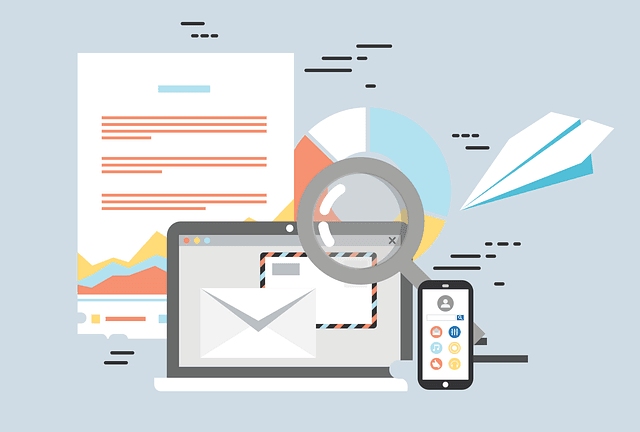Target Audience Identification
Understanding your target audience is a vital step in crafting a successful service marketing strategy. Personalization and data analytics play crucial roles in effectively reaching potential customers.
Importance of Personalization in Marketing
Personalization in marketing enhances the customer experience by making them feel valued and understood. According to a Zendesk report, 68 percent of consumers expect all experiences to be tailored to their preferences (HBS Online). This expectation underscores the importance of adapting your marketing strategies to fit the unique needs of each customer. By creating personalized interactions, you can increase customer satisfaction, which often leads to higher loyalty and spending.
Incorporating personalization can include:
- Customized email marketing
- Targeted promotions based on customer behavior
- Tailored content that addresses individual customer interests
Implementing personalization strategies can ultimately provide a competitive edge in your market, allowing you to connect more deeply with your audience.
Utilizing Customer Data for Targeting
Using high-quality customer data is essential for identifying and effectively targeting your audience. HubSpot reports that 82 percent of marketers consider accurate customer data critical for their success (HBS Online). By analyzing consumer behavior and preferences, you gain valuable insights into what your audience is seeking.
The benefits of leveraging customer data include:
| Data Type | Description |
|---|---|
| Demographic Data | Information about age, gender, income, etc. |
| Behavioral Data | Data on browsing habits, purchase history, etc. |
| Psychographic Data | Insights into lifestyle, values, and interests |
Segmenting your audience based on this data not only enhances the effectiveness of your outreach but can also significantly impact revenue. For instance, segmenting consumers with similar needs and preferences can lead to increased revenue by up to 760 percent (HBS Online).
Analyzing data facilitates informed decision-making, guiding you to develop tailored campaigns that resonate with each segment of your target audience. For more insights, explore our articles on market research for goods and services and consumer behavior towards goods and services.
Segmentation Strategies
Effective segmentation strategies are essential to developing a strong service marketing strategy. By breaking down your target market into distinct groups, you can tailor your offerings to meet the specific needs of those audiences. This section explores the benefits of consumer segmentation and its potential impact on revenue.
Benefits of Consumer Segmentation
Segmenting consumers into groups with similar needs and preferences can have significant advantages. By creating “segments,” you can design targeted marketing campaigns that resonate with specific audiences. The key benefits include:
- Increased Relevance: Tailoring messages for specific segments leads to higher engagement and conversion rates.
- Enhanced Customer Understanding: By defining your segments, you gain insight into customer behaviors, preferences, and pain points.
- Efficient Resource Allocation: Focusing on high-potential segments enables you to allocate marketing resources more effectively.
Market researchers typically divide consumers into four major segments:
| Segment Type | Key Characteristics |
|---|---|
| Demographic | Age, income, gender, education |
| Geographic | Location, population density |
| Psychographic | Lifestyle, interests, values |
| Behavioral | Purchase behavior, brand loyalty |
These segments help in recognizing and analyzing each group’s unique preferences (Investopedia).
Revenue Impact of Segmentation
The financial benefits of segmentation are compelling. Studies indicate that segmenting consumers can lead to increased revenue by up to 760 percent when done effectively (HBS Online). This revenue boost highlights the importance of personalized targeting and messaging in maximizing sales potential.
Effective segmentation not only enhances customer engagement but also contributes to overall business success. By aligning your service offerings with the specific needs of distinct consumer segments, you create opportunities for upselling and cross-selling, further driving revenue growth.
For more insights into optimizing your service marketing strategy, explore resources on market segmentation for goods and services and consumer behavior towards goods and services.
Building Customer Relationships
Establishing strong relationships with your customers is a key factor in the success of your service marketing strategy. Two effective methods to enhance these relationships are through word of mouth influence and leveraging influencer partnerships.
Word of Mouth Influence
Word of mouth (WOM) is a powerful marketing tool. Research shows that it influences 20 to 50 percent of all purchasing decisions (HBS Online). This highlights the importance of building strong connections with your audience. Here are some strategies to enhance WOM:
- Encourage Customer Reviews: Satisfied customers can share their positive experiences online or through personal conversations.
- Provide Exceptional Customer Service: Consistently high-quality service encourages customers to share their experiences.
- Create Shareable Content: Offer valuable content that customers want to share, such as informative articles or engaging videos.
| Strategies to Enhance WOM | Description |
|---|---|
| Encourage Customer Reviews | Solicit feedback and promote customer testimonials. |
| Provide Exceptional Customer Service | Ensure satisfaction to stimulate conversations. |
| Create Shareable Content | Develop content that resonates with your audience. |
Leveraging Influencer Partnerships
Engaging with influencers can significantly impact your marketing efforts. Collaborating with well-known figures allows you to tap into their audience and build credibility. For example, GymShark, a fitness apparel company, achieved record-breaking sales through partnerships with athletic influencers (HBS Online). Here are ways to leverage influencer partnerships effectively:
- Identify Relevant Influencers: Choose influencers whose values align with your brand.
- Build Authentic Relationships: Foster genuine connections with influencers to enhance trust with their audience.
- Offer Value to Influencers: Provide exclusive products or experiences that influencers can share with their followers.
| Influencer Partnership Strategies | Description |
|---|---|
| Identify Relevant Influencers | Collaborate with influencers who resonate with your target market. |
| Build Authentic Relationships | Create mutual trust to enhance marketing reach. |
| Offer Value to Influencers | Engage influencers with exclusive opportunities. |
By focusing on word of mouth and influencer partnerships, you can build lasting customer relationships that bolster your overall marketing strategy. Implement these tactics to optimize engagement and drive success in your service marketing initiatives. For more insights into marketing techniques, explore our articles on branding goods and services and customer satisfaction for goods and services.
Content Creation in Service Marketing
Crafting a successful service marketing strategy revolves around one crucial element: high-quality content. By prioritizing the creation of engaging and relevant content, you can effectively capture the attention of your target audience and build lasting relationships.
Importance of High-Quality Content
In today’s digital age, producing high-quality content that resonates with your audience is essential for effective customer engagement. Research shows that businesses leveraging strong content marketing strategies can generate up to 3 times more leads than those that don’t (Digital Marketing Institute). High-quality content not only attracts potential customers but also enhances brand credibility and trust.
Key benefits of high-quality content include:
| Benefits | Description |
|---|---|
| Increased Visibility | Quality content helps improve search engine rankings, making it easier for customers to find your services. |
| Enhanced Engagement | Engaging content encourages interaction and shares, amplifying your brand’s reach. |
| Establishing Authority | Valuable content positions your brand as a thought leader in the industry, building trust with your audience. |
To achieve this, focus on defining your goals and conducting audience analysis to create a tailored content plan that aligns with your marketing strategy. Explore techniques like storytelling and educational content to captivate your audience.
Engaging Through Content
Content engagement is more than just capturing attention; it’s about fostering ongoing conversations with your customers. Utilizing various communication channels, such as social media, email marketing, and blogs, allows you to connect with your audience in different ways. This multi-channel approach keeps your brand top-of-mind and encourages customers to take action, ultimately driving sales.
Consider the following strategies for boosting engagement:
- Interactive Content: Create polls, quizzes, or infographics to encourage user participation.
- User-Generated Content: Encourage your customers to share their experiences and reviews, increasing authenticity.
- Video Content: Utilize engaging videos to explain complex services or showcase testimonials, improving user experience and retention.
By prioritizing engagement through high-quality content, you not only enhance your marketing strategy for goods and services but also create a sustainable relationship with your customers, setting your brand apart in a competitive market.
Digital Channel Interaction
Building Relationships via Digital Channels
In today’s digital landscape, building relationships via digital channels is essential for any effective service marketing strategy. Engaging with consumers through various online platforms fosters valuable connections, which can lead to increased brand loyalty and customer retention. Using channels such as social media, email marketing, and traditional advertising, you can reach your target audience more effectively and encourage meaningful interactions Digital Marketing Institute.
Strategies to enhance relationships include:
- Consistent Engagement: Regularly posting updates and responding to customer inquiries.
- Content Personalization: Tailoring content to fit the interests and preferences of your audience.
- Feedback Mechanisms: Encouraging and addressing customer feedback through surveys or reviews.
| Channel Type | Purpose | Examples |
|---|---|---|
| Social Media | Engagement and brand awareness | Facebook, Instagram |
| Email Marketing | Direct communication and promotions | Newsletters, Offers |
| Traditional Marketing | Broader outreach and accessibility | Flyers, Event Promotions |
Implementing an omnichannel marketing approach ensures a seamless experience across multiple touchpoints, strengthening your overall service marketing strategy Digital Marketing Institute.
Enhancing Brand Loyalty
Enhancing brand loyalty involves creating a positive customer experience through consistent interactions across digital channels. By aligning your marketing efforts with the strengths of your business and catering to the unique needs of your customers, you can improve the effectiveness of your marketing initiatives NI Business Info.
Key tactics to foster brand loyalty include:
- Exclusive Offers: Providing loyal customers with special promotions or discounts.
- Customer Recognition: Acknowledging repeat customers through loyalty programs.
- Engagement Campaigns: Creating campaigns that invite customers to participate and share their experiences.
Using effective communication channels not only helps in reaching your target audience but also encourages them to take action, ultimately driving sales and achieving your marketing goals LinkedIn.
By focusing on building relationships via digital channels and enhancing brand loyalty, you can create a robust service marketing strategy that aligns with your business objectives while ensuring customer satisfaction. For further insights on creating effective marketing strategies, explore our comprehensive piece on marketing strategy for goods and services.
Personalized Customer Experiences
Creating personalized experiences for your customers is crucial in today’s competitive market. By understanding customer journeys and implementing effective personalization tactics, you can significantly enhance your service marketing strategy.
Understanding Customer Journeys
The customer journey is the process a customer goes through when interacting with your brand, starting from the awareness stage to the point of purchase and beyond. Mapping out this journey allows you to identify key touchpoints where you can engage with customers and provide tailored experiences.
A well-defined customer journey typically includes the following stages:
| Stage | Description |
|---|---|
| Awareness | Customers discover your brand through various channels. |
| Consideration | Customers research and evaluate your offerings. |
| Decision | Customers make a purchasing decision based on their needs. |
| Retention | Customers engage with your brand post-purchase. |
| Advocacy | Satisfied customers promote your brand to others. |
By analyzing data at each stage, you can identify opportunities to personalize experiences that resonate with your customers. Understanding the significance of these interactions will allow you to craft strategies that encourage loyalty and repeat business.
Implementing Personalization
Implementing personalization involves using insights gathered from customer data to create custom experiences. This can be achieved through various methods, including targeted messaging, personalized content, and tailored recommendations.
Targeted Messaging: Use data to tailor your communications. Awareness campaigns can focus on specific demographics, while emails can send personalized offers based on previous purchases.
Personalized Content: Create high-quality content that speaks to your audience. You can engage your customers more effectively by addressing their specific interests and needs. Refer to our article on marketing strategy for goods and services for more on this topic.
Tailored Recommendations: Leverage analytics to suggest products and services based on individual customer behavior. This not only improves sales but also enhances customer satisfaction.
Omnichannel Experience: Ensure a seamless experience across various touchpoints. Customers should feel a consistent and personalized experience whether they interact with your brand online or offline (Digital Marketing Institute).
Feedback Mechanisms: Collect feedback to understand customer perceptions. Use surveys and reviews to refine your personalization strategies, ensuring they align with customer expectations.
By focusing on understanding customer journeys and implementing personalized tactics, you can optimize your service marketing strategy to foster better relationships with your audience. For further insights into optimizing your marketing efforts, explore our resources on consumer behavior towards goods and services and market segmentation for goods and services.
Data Analytics for Optimization
In crafting a robust service marketing strategy, the utilization of data and analytics can be a game changer. This enables you to refine your tactics, accurately target your audience segments, and evaluate the success of your marketing initiatives.
Leveraging Data and Analytics
Using data and analytics helps you to identify customer preferences, track behaviors, and measure engagement across various platforms. This insight can inform your marketing strategies, allowing for more tailored and impactful outreach.
| Aspect | Benefit |
|---|---|
| Target Audience Segmentation | Precise targeting of marketing campaigns |
| Campaign Performance Tracking | Immediate feedback for adjustments |
| Customer Behavior Analysis | Understanding trends and preferences |
Active engagement with data allows for smarter decision-making. For example, employing Interactive Voice Response (IVR) surveys and SMS feedback provides direct methods to gauge customer satisfaction. These tools can collect valuable insights that help optimize future campaigns.
Measuring Marketing Effectiveness
To assess the effectiveness of your marketing strategies, establishing measurable goals is essential. By tracking these goals, you can make necessary adjustments based on ongoing results, ensuring your efforts remain aligned with desired objectives.
Effective measurement methods include:
| Measurement Technique | Description |
|---|---|
| Customer Feedback | Direct responses through surveys and inquiries |
| Online Behavior Analysis | Tracking website traffic and customer interactions |
| Sales Metrics | Evaluating revenue generated from campaigns |
Setting up feedback mechanisms, such as asking customers how they learned about your offerings, can provide invaluable insights (NI Business Info). This continual monitoring and evaluation not only helps in immediate strategy adjustment but also contributes to long-term growth in your customer base.
For further insights into creating a successful plan, explore characteristics of services in marketing and learn about marketing strategy for goods and services.
Omnichannel Marketing
In today’s competitive market, developing a robust service marketing strategy requires a focus on omnichannel marketing. This approach ensures that you provide a seamless experience across various touchpoints, enhancing customer satisfaction and engagement.
Seamless Customer Experience
A seamless customer experience means that your audience has a consistent interaction with your brand, regardless of the platform they choose to engage with. Implementing omnichannel marketing strategies supports this by providing a cohesive experience across offline and online channels. According to the Digital Marketing Institute, this continuity enhances the overall effectiveness of your marketing efforts.
To assess the elements of a seamless experience, consider the following chart:
| Channel | Description | Importance |
|---|---|---|
| Social Media | Engaging with customers through platforms like Facebook, Instagram, and Twitter | Allows for real-time interaction and feedback |
| Sending personalized newsletters and promotions | Direct communication with high engagement potential | |
| Website | Providing a user-friendly site for information and purchases | Serves as the central hub for your brand |
| In-Store | Offering face-to-face interactions and experiences | Builds trust and customer loyalty |
By ensuring that your messaging and branding are consistent across these channels, customers will feel more connected and engaged with your services.
Multi-Touchpoint Engagement
Multi-touchpoint engagement is essential to guide your customers through their journey with your brand. Customers often interact with multiple channels before making a purchase, and understanding their path can significantly impact your sales.
Utilizing data and analytics allows you to track customer behavior and understand the efficacy of each touchpoint. This will enable you to optimize your marketing efforts by focusing on high-performing channels and tailoring experiences to meet customer needs (Digital Marketing Institute). Establishing touchpoints can be categorized as follows:
| Touchpoint | Engagement Strategy | Purpose |
|---|---|---|
| Social Ads | Targeted advertising based on interests | Create brand awareness |
| Email Follow-ups | Personalized messages post-interaction | Nurture leads and encourage conversions |
| Website Chatbots | Instant responses for customer inquiries | Enhance user experience and support |
| Customer Feedback | Surveys and feedback forms | Gain insights and improve offerings |
Monitoring and evaluating your marketing strategy through various metrics, such as customer feedback and behavior analysis, is vital to remain aligned with your audience’s needs. This holistic and integrated approach helps you build lasting customer relationships and enhances your ability to promote your goods and services effectively.
For further insights on crafting effective strategies for goods and services, explore our sections on advertising goods and services and branding goods and services.





















